Maybe Mokele-Mbembes Are Mammals
Posted by: Loren Coleman on June 22nd, 2009
If you saw this beast in a rainforest would you have departed carefully after taking photos, and described your encounter with a “dinosaur”?
How about in Lake Tele in central Africa?
For hundreds of years, stories and sightings of supposedly surviving dinosaurs have come out of the jungles of central Africa. The first printed reference, in a 1776 book, relates Abbe Proyhart’s discovery of giant animal footprints in west central Africa, tracks that he claimed were three feet across.
In 1913, a German expedition in the Congo met a band of pygmies who described an animal they called mokele-mbembe, which means “one who stops the flow of rivers.” They said this beast was about the size of an elephant or hippopotamus, with a long, flexible neck and a long tail. This description would be repeated by numerous witnesses. Many would feel that the description was consistent with a sauropod or other small dinosaur.
As I and Patrick Huyghe noted in The Field Guide to Lake Monsters, Sea Serpents, and Other Mystery Denizens of the Deep, the existence of dinosaurs in central Africa is unlikely, but not a total scientific impossibility. According to cryptozoologist Karl Shuker, “If dinosaurs could exist unknown to science anywhere in the world, the Likouala is where they would be.”
But what if Mokele-mbembe aren’t dinosaurs?
I want to propose from another group of supposedly extinct animals a candidate that many of us grew up with, as collectors of little dinosaur figurines and related “prehistoric” toys, what we all knew in our youth as Indriotherium.
Do you remember those huge hornless rhinos mixed in with your dino collection?
Indricotherium, Baluchitherium, or Paraceratherium are names applied to the giant relatives of the rhino.
Discovery Channel has used all 3 names for programs. Walking with Prehistoric Beasts features Indricotherium as a solitary giant living in a relatively arid environment. While the PaleoWorld does a Paraceratherium program, which seems to be the name with priority. Recently, a program on a French expedition excavation in Pakistan uses Baluchitherium. There the environment was reconstructed as a lush jungle. The excavation is of what appears to be a herd that drowned crossing a river seems to indicate a social herd animal….
Indricotherium was the largest land mammal ever to live. This short-lived group of rhinoceros lived [during the Oligocene] in Central Asia and China. It was 27 ft long, as big as some of the extinct sauropods.
Source: Dinosaur Collector
The newer reconstructions of these rhinos (a group that has survived, please note, in Africa and Asia) show them as having elongated necks, like dinosaurs.
Indeed, I have been sent a beautiful and sizable (8″ tall) model of a new representation of Paraceratherium, created for the “Procon Collecta 2009 Prehistorics” collection, which mostly is of dinosaurs, from “Link and Pin Hobbies.”
Darren Naish in 1997 queried about whether was once there was “an indricothere fossil preserved in a standing position? Described by Osborn, I think, this poor animal seems to have become bogged in deep mud. I wonder if indricotheres could gallop.”
I wonder.
BTW/P.S. The just-released “Procon Collecta 2009 Prehistorics” also has other new “extinct” mammals, as shown here via these following two examples.
BTW, remember “MonsterQuest” broadcasts their new program on Mokele-mbembe this week, starting on June 24th. Below is a photo of one of the guides during the MQ expedition.
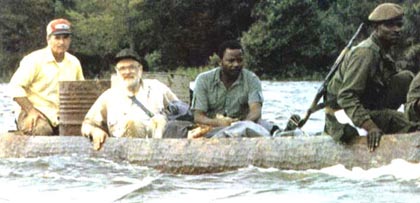
Roy Mackal, in the Congo, in search of Mokele-mbembe, during one of the modern classic expeditions covered by the original “In Search Of” television series.
Mokele-mbembe with hippo art, at top, courtesy of Bill Rebsamen. Click on illustration for a larger view.
Thank You.
About Loren Coleman
Loren Coleman is one of the world’s leading cryptozoologists, some say “the” leading living cryptozoologist. Certainly, he is acknowledged as the current living American researcher and writer who has most popularized cryptozoology in the late 20th and early 21st centuries.
Starting his fieldwork and investigations in 1960, after traveling and trekking extensively in pursuit of cryptozoological mysteries, Coleman began writing to share his experiences in 1969. An honorary member of Ivan T. Sanderson’s Society for the Investigation of the Unexplained in the 1970s, Coleman has been bestowed with similar honorary memberships of the North Idaho College Cryptozoology Club in 1983, and in subsequent years, that of the British Columbia Scientific Cryptozoology Club, CryptoSafari International, and other international organizations. He was also a Life Member and Benefactor of the International Society of Cryptozoology (now-defunct).
Loren Coleman’s daily blog, as a member of the Cryptomundo Team, served as an ongoing avenue of communication for the ever-growing body of cryptozoo news from 2005 through 2013. He returned as an infrequent contributor beginning Halloween week of 2015.
Coleman is the founder in 2003, and current director of the International Cryptozoology Museum in Portland, Maine.

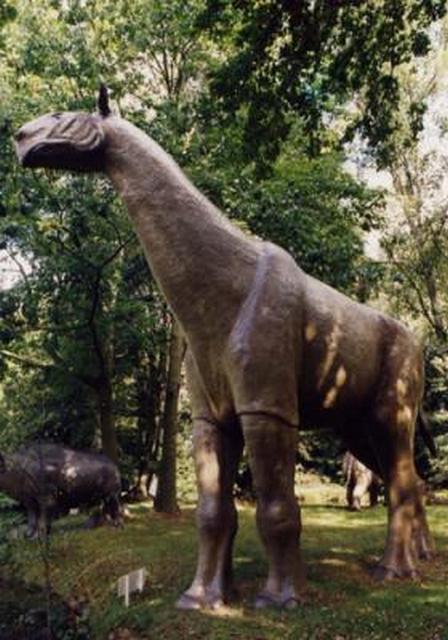
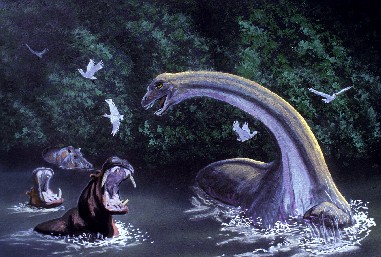

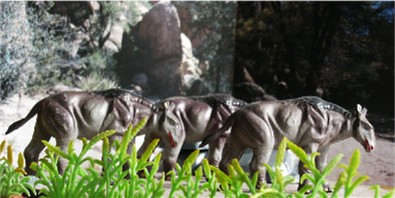
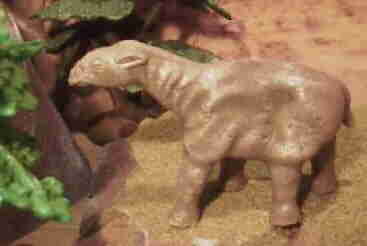
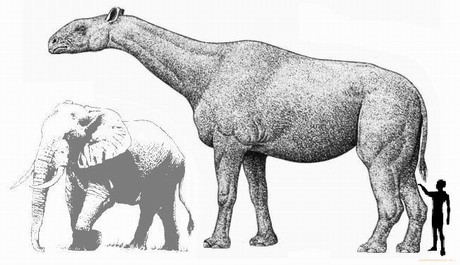
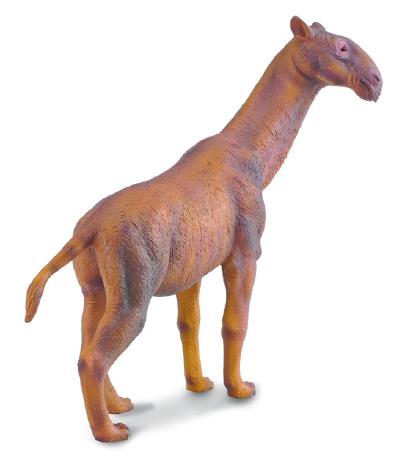
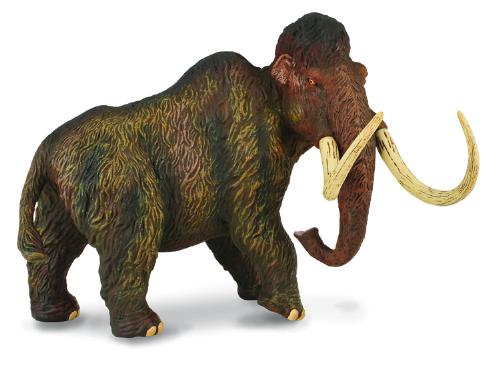

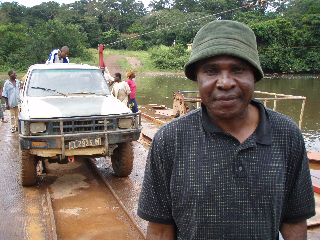









I think it’s much more likely that mokele-mbembe, if it truly exists, is a mammal, rather than a dinosaur or reptile. Very large mammals can be surprisingly cryptic in the forest. Even such a boldly colored animal as a Malaysian tapir “disappears” in its forest habitat.
I doubt it being an indricothere, since (so far) they aren’t known from Africa, but other types of hornless rhinos existed there so that’s an interesting possibility.
I don’t think so. First; the natives say it has a long tail…that critter(Indricothere) pictured has a short tail.
Second; The story about the heard being drowned crossing a river would not support the idea of an animal at home in the water…”He who stops the flow of rivers”.
And third;I never heard a description that included ears.
Not knowing anything about the frequency and coherence of reports, I’d say that all likely known animals – and a mammal would seem, totally subjectively, most likely to me – should be tossed into the hat, with the reports used for culling, but not taken too literally (e.g.: what is a “long” tail might depend on the witness and how much tail the witness saw).
Have natives been shown any pictures of the animals speculated here? That seems to be a standard-issue crypto tactic (and I’m sure it’s been done for mokele-mbembe with other suspected possibilities).
For some reason, I would find it emotionally more exciting to discover a remnant Indricothere (or more likely, a relative species) than a sauropod.
Perhaps I’m a (mammal) chauvinist.
So the animal mentioned above as a possibility could be a cousin of what we are really looking for. Does anyone know where the bones of the Indricotheres were found? I’m talking Africa or here in America? Never forget that we have only found a small percent of the bones of all the animals that lived on planet earth. We are talking a long history of life, and during those times I don’t think that mankind have ever known all of the animals (unless of course you believe that Adam got to name them all). Therefore, we could be talking about a long tailed, no eared version of the Indricothere that no one has found the bones for because…it is still alive and the place to find their bones is in the rivers of Africa, which I’d rather not go searching in. As for the mentioned “herd drowning”–seeing we know nothing about this animal, anything is possible. If it is a reptilian, those could have been the multiple babies doing something stupid. If it is an Indricothere, those could have been babies doing something stupid (we don’t know how many they give birth to at one time). They also could have been a smaller version of the Mokele-mbembe, ones that normally don’t cross raging rivers. Anything is possible at this point in time concerning all the evidence.
DWA,
It is unlikely that the unknown animal is an indricothere for the reason kittenz mentioned above, but the Baka and other pygmy groups in the area mentioned have indeed been shown typical identikit images of animals before on searches for mokele mbembe.
They have not only identified what looks like a sauropod as the creature, but specifically they have pointed to diplodocus as the culprit. It is said that mokele mbembe will not tolerate other animals along its stretch of the river, and that you will not find hippos where they exist.
Interestingly, the pygmies also mention what could be a type of ceratopsian as well, though on a savannah area rather than a swamp or river. In particular a styracosaur, though they claim these creatures are now very rare, even in comparison to mokele mbembe creatures. This second creature could of course be a kind of cryptid rhinocerous.
Finally, the pygmies were able to identify all animals common to their area from the same pictures, and were not able to identify common animals not from their area, such as bears or moose. They described the styracosaur not from a picture of exactly that, but by pointing to other ceratopsians and then explaining what was different about the neck frill.
very interesting, I had never heard this theory before and it may hold as much credibility as the living dino theory. the only think wrong with this theory would be the eyewitness’s that claim a “crocodile” style tail.
my favorite animal. 🙂
but i have to say no mammal
don’t you think if a dinosaur was found, it would make world news more than a prehistoric animal (non dinosaur)
and well it could be a dinosaur. it could be a mammal, it could be something new that’s not a mammal or dinosaur.
remember when they scientist showed the native Africans the picture of the possible dinosaur. well why would they pic a brontosaur? the brontosaur head is not as big as the mammal pictured. and remember the sightings included reptilian features?
so if this is a mammal it must looked reptilian. i remember reading the head resemble a snake
Given the number of expeditions to this area and the sparse local population, I wonder if the local inhabitants have become “contaminated” so that card/book/picture tests, at some point, stopped having validity?
A large unknown mammal is a far, far more likely candidate if this creature exists. From everything I’ve read, the evidence for the Mokele seems far more anecdotal in nature than it does for Sasquatch in the Pacific Northwest or Yeti in the Himalayas.
Its hard to know since we can’t communicate with the pygmies who have described this thing, but is it possibly a “spirit animal” rather than a physical one to them? Spirit animals in indigenous cultures frequently combine characteristics of several animal species which when interpreted collectively in the western mind, comes out as a “dinosaur” or something somewhat more familiar to us.
It would seem that if there is a large critter(s) in or near Lake Tele, better evidence would have been forthcoming by now. When I was a kid (45 years ago) there was speculation then about remnant dinosaurs in the Cameroon and Congo. Lake Tele region is remote and perhaps still not exhaustively explored, but there have been a number of expeditions, biologists and ecologists out there to study the environment in the last 45 years. The region is better known now than it was then. It seems like something more substantive in evidence would have turned up if there is a breeding population of large animals would have turned up along the way. Forest elephants are very rarely spotted there, but they do leave irrefutable evidence of their presence.
I think when Brady Barr was there a year or two ago, he found the smaller dwarf crocodiles but none of the much larger Nile crocs. After several days of fruitless searching he finally did find an exceptionally large Rock python in the root wads along the bank.
I’m sure there are plenty of small unknown cryptids in the Congo, but the chances of a truly “giant” cryptid being found are diminishing with each passing year. However, I’d be delighted if something huge, be it mammal, reptile or whatever turned up around Lake Tele.
I think this idea makes much more sense than living Sauropods. Occam’s Razor.
In the EQUATOR ? series the pigmys were said to have identified the mokela mbembi as a rhinocerous from the pictures they were shown. This accorded with the programme makers theory that the congo had previously been savannah and thus explained the local presence of some savannah animals not including the rhinocerous.
This does now suggest the possibility that in fact the pigmys might have been identifying rhinocerous LIKE animals. The difference being missed by the programme makers. One can speculate why this might be so.
It must be true that the pigmys evidence is partly compromised by contact with researchers but if they have seen thse creatures then their witness must be studied and valued on its merits.
I always thought most probably mokela-mbembi was a large lizard or water monitor and least probably a dinosaur relative. Being reptile would help avery large animal find enough food. The idea it may be a mammal
is very interesting and needs further research.
I would be eqauly thrilled with any of the above or a Ropen. I never heard about the the Staracasaurs in the savannah before, what sight that would be! The Woodland bison is large and kept out sight for quite some time so did a couple hundred thousand Mountain Gorillas until recentely, so these being unseen or seldom seen are not that far fetched. I wonder what will come out of the melting ice caps? I can deal with anything except giant crabs, clickity clack….(darn you Guy N. Smith!).
As I recall, the Mokele-Mbembe identified as a rhinoceras by some locals exists in a different region of the Congo from that of the true Mokele-Mbembe, and thus the name is likely to be something of a coincidence, norman-uk.
Personally, I am a bit dubious of the Indricothere theory – the fossils of that animal have never been found in Africa, and it doesn’t fit with the descriptions given by Pygmies. I think we should resolve the issue of Indricothere vs. Sauropod by, at some point, setting up another expedition, and performing another picture test – show them 2 pictures, a Diplodocus and an Indricothere, in a side-by-side comparison, and ask them which one is more similar to Mokele-Mbembe.
I actually was wondering the same thing as MattBille mentioned. The story may have been presented to the people so many times now that they are giving a response to inquiries that bears no credibility anymore. If that’s the case then only physical proof will suffice. However, shifting the search from a dinosaur to a mammal might suggest some new areas to explore. Perhaps it might also open eyes to evidence that before would have been overlooked since the focus was on a saurapod and not a mammal. Just a thought.
Saquatch is right (to me).
From the natives description and the fact the length of its tail, I would definitely say Sauropod (Dinosaur). Another factor indetermining what it is the fact that it almost always seen in or near water. I don’t think the Indricotherium was a water-dweller. Uriah said it best—Occam’s Razor.
CryptoInformant 2.0: your a genius well not really, but your right.
i think we do need more expeditions. what if both the Sauropod and that mammal both live in the same region. that would be greater than just one animal
plus you may find other cryptids.. 🙂
HOOSIERHUNTER: i think your right at some points. but yes if it’s a mammal, it may be a aquatic mammal, mokele-mbembe means the one who stops the flow of rivers. the this was said to be a swamp dwelling but also lives in caves. do hippos live in swamps?? maybe.
Sinnbox: i think your right. 🙂 unless it’s a new type of animal that looks like both mammal and reptilian. 🙂 or its a reptilian. 🙂
korollocke: yes i say that to myself. the BISON. 🙂 i mentioned that to a few friends. 🙂 i think i have. 🙂 to give a example on the existiance of any animal thought to be extinct. 🙂 Myabe DT and MQ should team up somehow they both have money. maybe they can put the money together and stay longer in africa or mq stays first then DT goes and puts the footage on the same show. After all DT saw lightes in the sky during the Ropen expedition. 🙂 could be the actuall ropen. 🙂
mq and dt i suggest they never give up on Mokele-Mbembe. They never gave up on bigfoot/yetis/sasquatch.
idk its just me that a Dinosaur is far more better discovery of all time. in the media were told Dinosaurs are like more prehistoric then prehistoric mega faunas. and Jurasic park was like a hit. and made cloning likable and talks to much about evolution. plus the text books about evolution seems to focus more on dinosaurs than mega faunas.
non the less a expedition is far more greater than anything unless a native african takes a picture of one and sends it to the news/internet//etc. hey any cryptid will do.
Hmmm why don’t they give it to a witness who can draw and so he/she can draw the creature and color it.. and maybe we can find a way to digitalize it to make it look clearer. 🙂
that may be better if you want an expedition to know what your looking at cause if you see any large animal with a long neck someone may confuse that unknown animal for a mokele Mbemebe and if that’s true we may be dealing with more unknown giants of africa.. 🙂
then again mokele mbembe could of hybrid/mated with another of it’s kind from a differen’t variety of it’s kind that we never even heard of before. Maybe some sightings of mokele mbembe had different’ descriptions, maybe that’s cause their differen’t varietys like for example:
a man saw a cryptid called a German Shepard.
a woman saw a unknown animal called a afghan hound. but she called the afghan hound sighting a German Shepard sighting. 🙂
a boy saw a uknown canine and called it a german shepard sighting. the uknown canine could of been a hybrid of a Afghan and German shepherd.
A Paraceratherium as a Mokele-mbembe sounds a good theory, though its fossils were found only in Asia. But it could be also a giant monitor lizard.
cryptoimformant2.0
I think this was the programme though it seems a bit to old.
One thing that was interesting in it was the mention of a single horn. This is something that perhaps wouldnt have survived in fossils if the prehistoric mammals mentioned in this topic had one and which, if they did would link with a modern rhino. Though somehow even the modern rhino doesn’t seem modern.
Since the congo flows into the ocean I wonder if there is a sea connection? Perhaps a bit off topic but there is a wonderful report of sea monsters with single horns in a 1902 japanese report. There may even be specimens in some japanese museum.
So, this African legend has been identified as a North American sauropod living in swamps — just EXACTLY the way they were thought to do at the time the pictures were shown, before adequate attention was given to the shape of the sauropod foot? Yeah, that’s convincing.
The chance of getting good information from the locals has largely been blown to Timbuktu; they know what the “right” answer is to give a curious visitor.
This is also one reason why witnesses should not be asked to identify cryptids from a “lineup” of the researcher’s favorite animals; they should be asked to draw the thing they saw.
Fhqwhgads:
I think both techniques – the pick-the-animal and the sketch-from-scratch – have yielded intriguing results.
Locals shown pictures of known animals in an effort to pin down the appearance of the orang pendek responded positively to pictures that seemed to reflect quite well what other locals – sat down with a World Wildlife Fund artist – described when asked to start from scratch. The ones shown the pictures focused on the features in the picture that corresponded to what they saw, while noting the differences. The artist kept drawing the same animal over and over, with different witnesses.
I’d agree with you not to focus simply on the flash-card approach. In fact, as you note, that seems to be muddying the waters in the case of this critter.
But I’d try both approaches. (And yes, focus on start-from-scratch, if I had to choose one. For one thing, you can pack additional shirts and underwear in the space vacated by all those pictures. 😉 )
The idea of a mammal is actually pretty fascinating. Like a lot of posters on here, I would prefer a dinosaur. Nonetheless, if the mokele-mbembe is proven, good enough.
What is, I think, not a powerful argument against it is the tail. Yes, the tail of the ancient indricothere or relative is relatively small. Of the animals discovered so far. If mokele-mbembe is a relative or similar animal, and no fossils discovered, that does not mean it is not a mammal. And who’s to say a long-tailed version of the indricothere did not develop anyway?
Still, here’s hoping it’s a dinosaur!
I’m not sure if it’s been mentioned already, but I recall a very interesting point brought up in a Lake Tele documentary. One of the scientists claimed that the area where Tele is located is one of the extremely rare spots on earth that hasn’t migrated from it’s location from the continental shifts since the time of dinosaurs. His point was that he believes the climate has changed very little since 65 million + years ago, lending some sort of credence to the possibility of the region being able to support dinosaurs. Even if Mokele doesn’t exist, it’s a pretty amazing and interesting region of earth.
CryptoImformant 2.0
The programme featuring the Bakka and the mekole-mbembi is being shown several times on Eden at sky tv 24/7. The Bakka became almost family when discovery (?) did a series on them and their music often ambushed me into a hum thereafter. What became of little Ali?
Being a reptile and cold blooded mokele-mbembi could eat well on less and keep out of site and sight whereas a large mammal would likely be constantly eating and therefore more visible and not the cryptid we almost know! I appreciate an elephant can seemingly disappear but I should think its at the end of the size scale for that kind of magic.
I’m assuming M-M would be cold blooded and a herbivore but maybe not. Certainly it seems unlikely a dinosaur would still be around and even more so if it was warm blooded or a carnivore. An opportunistic omnivore maybe.
Is it overdue for someone to review the 1913 translation of mokele-mbembi? The one given I find a questionable name for any creature except for something like a giant beaver and it might have been given rather arbitrarily in the first place.But the name should give us a clue as to the nature of its subject
and though this is a little bit off subject you know how some say styracosaurus( which is thought to be the explanation for the ngoubou) bones have only been found in america assuming the styracosaurus survived until or past the ice age and assuming they were warm bloode (which is supported by the fact that they are said to give birth to live young) shouldn’t have been able to cross the bering land bridge and and have been able to make their way to africa because it seems to me that few people take this into consideration.
interesting idea. I’m not sure if the descriptions match, but then again, it does depend on how the questions were asked and so on and so forth.
I have come to see that physical descriptions of things are complex because everyone brings their own experience to the table. Thus we have our chimeras and sometimes descriptions take on chimera like traits.
While everyone wants a dinosaur to be roaming the jungles of Africa and anywhere else, I would be as excited over any kind of previously thought extinct animal…mammal or otherwise.
Sorry the CONGO programme I mentioned is on UK sky today 24 6 09 (Several times) not as i wrote july, Enjoy! but looks as if we have to wait until winter to see Monster Quest.
Pygmys maybe sometimes be described as ”children of the forest” but I dont see what they say about mokele-mbembi cannot be considered as good or better than what anyone else says. THEY are the experts and what witness today is not compromised or enlightened by cultural contact?
OR we end up with a situation where nobodies witness is valid -because its been on television or in films. This is the sort of augument used by your scoftics. In due course we likely to lose the chance as the Bakka get put in little bungalows and get to watch the Xfactor and other modern delights.
Sure use discretion with witness statements, but whats new about this
anyways the indricothere idea is more likely though the description fits a sauropod better. one other thing you know how some say saurpods lugs would collapse if they went in water well I recently had a talk with a paleontologist and he told me about a find his freind found. it was a brachiosaur with shrimp lodged in it’s teeth. which would only happen if it head was submerged adding a little credibility to arguement if sauropods could swim or not
I’ve been saying this for years! Seriously, the Indricotherium or some close relative is a far better fit for Mokele Mbembe than any Sauropod Dinosaur, whose heyday had long since passed ere the Cretaceous was even half over. The same would hold true for the so-called “Sirrush Dragon” and the stories of Behemoth, if one chose to posit the -possibility of a real-life counterpart to such things. Not surprisingly, others have suggested Sauropods for them too, and even seen fit (Not entirely unjustifiably, I might add) to link them to Mokele Mbembe as well.
I could entertain the mammal theory but in the program several natives were reported to have said the thing had like a “frill” on its neck or head. Sounds much more like a reptile to me than a mammal, and as large as it seems it could be a evolutionalized surviving dinosaur species. I would not rule it out.
I agree with the mammal theory. Perhaps to adapt to a semiaquatic life an indricothere or indricothere like animal now has a long and pointed tail like an otter. I can really see someone seeing a long tailed indricothere feeding in a river and thinking it is a dinosaur.